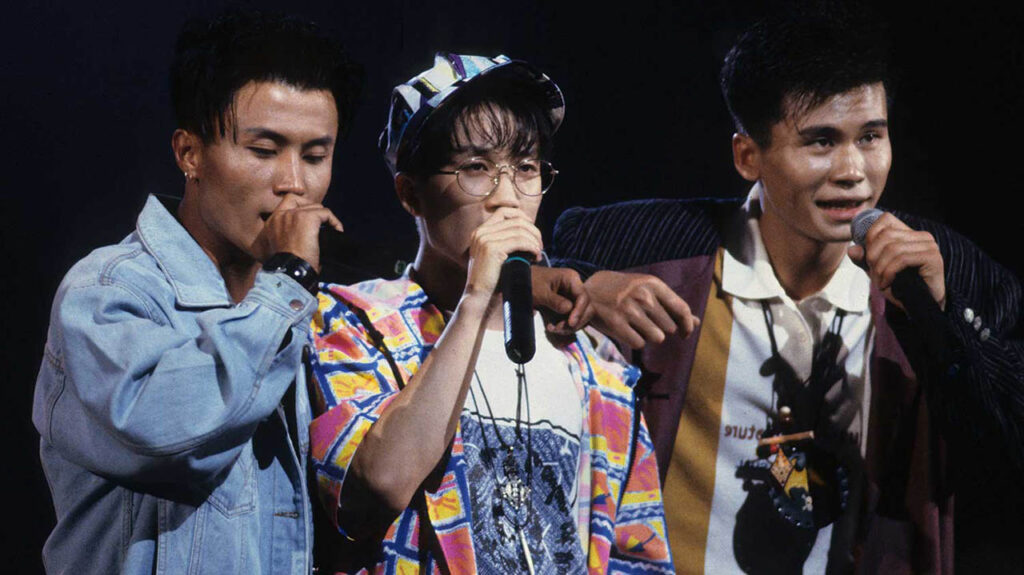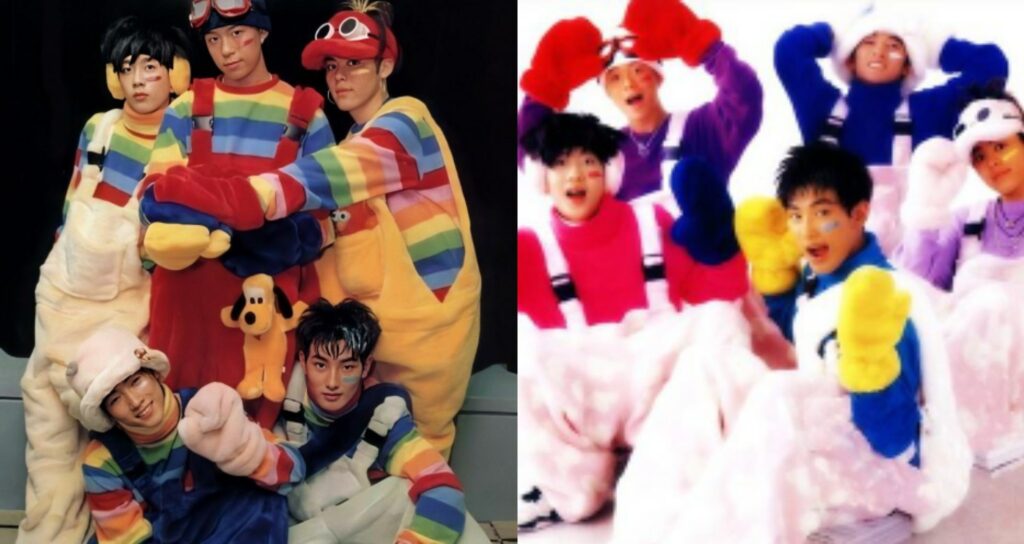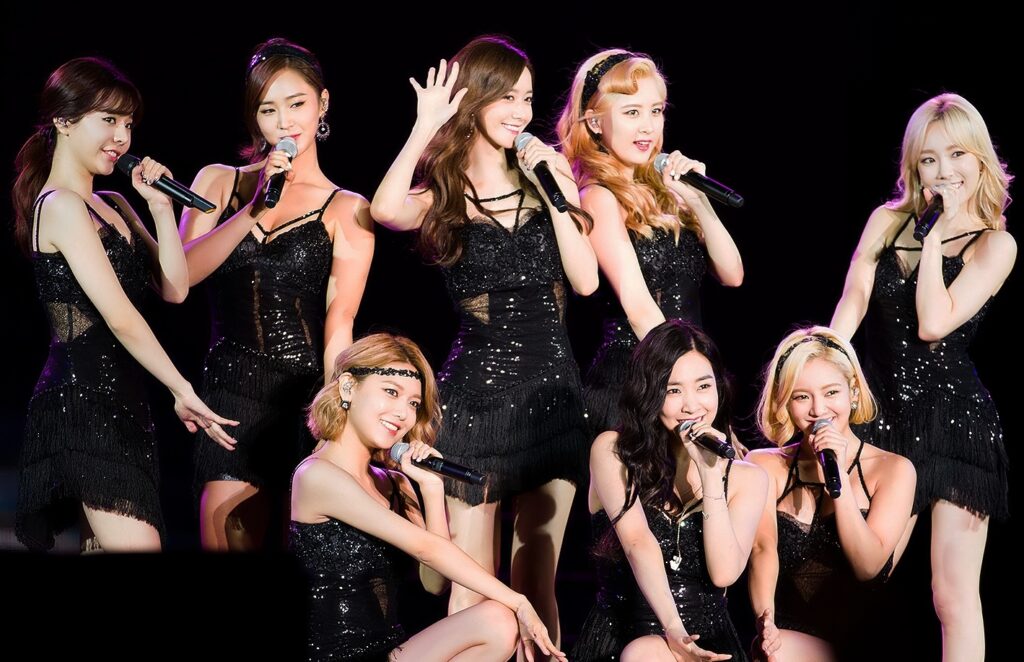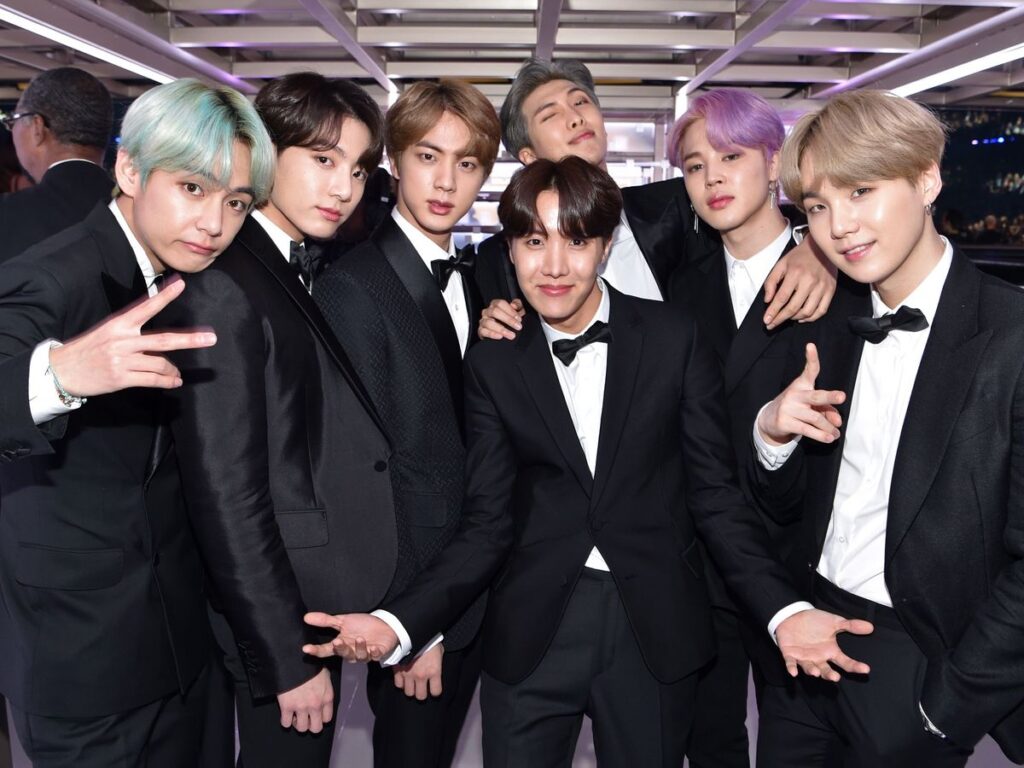When Did K-Pop Start Becoming A Global Phenomenon
K-pop’s global rise traces to the 1990s when artists pioneered fusing dynamic Western Pop with Korean lyrics and melodies. This established K-Pop’s distinctive identity, which captivated global audiences.
Pivotal milestones include Seo Taiji and Boys’ innovative sound in 1992 and the viral hit Gangnam Style, which exposed K-Pop worldwide in 2012.
Global icons like BTS and BLACKPINK keep the brand alive today. These compelling artists transcend linguistic and cultural barriers, propelled by devoted fandoms.
If you want to learn more about K-pop’s history and the artists behind it, keep reading.
Understanding Korean Pop Music and Its Origin
When did K-pop first start? It originated when Seo Taiji and Boys revolutionized South Korea’s 1990s music scene by fusing aggressive rap, rhythmic beats, and Korean musical intricacy. Resonating with youth culture, this synthesis forged K-Pop’s identity and paved the way for eventual global success.
Since then, it has become an international sensation in the 21st century. It’s a dynamic blend of various music styles originating from South Korea, including pop, rock, hip-hop, R&B, and electronic.
The diversity in K-pop caters to all music preferences. From fans of classic pop to those who enjoy pop mixed with rap, there’s a K-pop group that will satisfy their ears.
Despite its global influence, K-pop remains authentically Korean. Its roots are in traditional Korean music, and the songs are primarily in Korean, with occasional English elements. This blend of global genres with a Korean touch makes K-pop a unique and eclectic music genre.
When Did K-Pop Become Popular?
K-pop, a dynamic blend of upbeat music and intricately choreographed dance traces its origins back to South Korea. But how did K-pop start making waves?
The genre began to gain significant traction in the late 1990s and early 2000s. This era marked the advent of ‘Hallyu‘ or the ‘Korean Wave,’ a term coined to describe the increasing global popularity of South Korean culture, encompassing everything from music and movies to television dramas and cuisine.
The first generation of K-pop artists and idols played a pivotal role in this cultural phenomenon. These early K-pop stars, such as Seo Taiji and Boys, laid the groundwork for the genre. Their innovative approach to music, blending Western pop with Korean elements, resonated with domestic and international audiences.
It wasn’t long before K-pop began to reach a global audience, transforming from a national treasure into a worldwide sensation.

Early Influences
The first generation of K-pop was marked by iconic groups and artists who set the stage for the genre’s explosion in popularity. Among them was H.O.T., a boy band that became a household name with their hit song “Candy” in 1997. This track, with its catchy melody and vibrant performance, encapsulated the essence of K-pop and helped popularize the genre.
Rise to Popularity
Integral to K-pop’s rise to fame is the ‘Hallyu Wave.’ This cultural wave, originating in the 1980s, represents the global spread of South Korean culture. K-pop, with its unique blend of addictive melodies, high-energy dance routines, and visually appealing K-pop idols, became a leading force in this cultural export. The music’s appeal extended beyond South Korea, captivating audiences worldwide and becoming synonymous with the Hallyu Wave.
Expansion Beyond South Korea
While far removed from the Hallyu Wave, the stats don’t lie when looking at the exponential growth of K-pop. In 2008, South Korea’s cultural exports (including television dramas and computer games) rose to US$2 billion, maintaining an annual growth rate of over 10%.
Since K-pop started to spread its industry outside South Korea, K-pop artists have set notable records on YouTube. Of the 2.28 billion worldwide K-pop YouTube views in 2011, 240 million came from the United States, more than double the figure from 2010 (94 million). A lot of those numbers have one K-pop band to thank, BTS.
The BTS global phenomenon exemplifies the expansion of K-pop beyond South Korea. This boy band has become a household name, not just in Asia but worldwide, symbolizing the Korean Wave’s crest over international shores, including the United States.
Their success story is not just about music but the power of cultural exchange and the universal language of art transcending borders. BTS and other K-pop groups have played a significant role in bringing K-pop to the global stage, making it a pivotal part of modern pop culture.
In 2011, it was reported that the total sales for K-pop artists increased 22.3% in Japan between 2010 and 2011.
Top K-pop Idol Groups and Artists in History
Seo Taiji and The Boys
Various generations of idols and groups have continually reshaped the landscape of K-pop music, each bringing their unique style and influence. From the early 90s to 2023, several K-pop groups and artists have significantly contributed to the genre, leaving an indelible mark on Korean culture and the global music scene. Their achievements range from chart-topping hits to groundbreaking choreographies, influencing millions of fans worldwide.

Seo Taiji and The Boys are often credited with laying the foundation for modern K-pop. They revolutionized the South Korean music scene in the early 90s with their blend of Western pop, hip-hop, and R&B. Their hit songs like “I Know” combined catchy tunes with complex choreographies, setting a new standard for future K-pop groups.
H.O.T.

H.O.T., an acronym for Highfive Of Teenagers, emerged as one of the first successful boy bands in the K-pop industry. With hits like “Candy,” they were known for their energetic performances and are considered pioneers in blending pop music with vibrant dance routines.
Wonder Girls
The Wonder Girls were among the first K-pop groups to gain international recognition. Their song “Nobody” became a global hit, known for its catchy beat and iconic dance moves, solidifying their place in K-pop history.
PSY

PSY became a worldwide sensation with his song “Gangnam Style,” which was not only a musical hit but also a viral phenomenon due to its unique and humorous dance. This song became the first to reach over a billion views on YouTube, showcasing the global appeal of K-pop.
Super Junior
Super Junior is renowned for their diverse music styles and charismatic performances. Hits like “Sorry, Sorry” have become staples in the K-pop industry, known for their catchy hooks and synchronized dance moves.
Girls’ Generation

Girls’ Generation, also known as SNSD, is one of K-pop’s most prominent girl groups. Their song “Gee” set records and is remembered for its catchy melody and signature dance moves, marking a new era for girl groups in K-pop.
EXO
EXO, formed by SM Entertainment, quickly rose to fame with their intricate choreographies and powerful vocals. Songs like “Growl” have impacted the K-pop industry, showcasing the group’s unique style and talent.
BTS

BTS has taken the world by storm, breaking numerous records and becoming global icons. Their music, which often includes themes of self-love and social commentary combined with high-energy performances, has garnered a massive international fanbase.
Blackpink
Blackpink has made a name for themselves with their edgy and powerful performances. Hits like “Ddu-Du Ddu-Du” showcase their unique style, blending fierce choreographies with catchy tunes, making them one of the most influential girl groups in recent years.
TWICE

TWICE, known for its colorful and vibrant concepts, has captivated fans worldwide. Songs like “Cheer Up” and “TT” are celebrated for their catchy choruses and playful choreographies, solidifying their position in K-pop.
Recent Developments in the K-pop Scene
The K-pop industry has always been at the forefront of embracing new trends and technology, and recent years have seen a dramatic transformation in K-pop music and how K-pop idols interact with their fans. The advent of social media has played a pivotal role in propelling K-pop’s fame to unprecedented heights.
Platforms like TikTok have become hotbeds for dance challenges and snippets of K-pop songs, often going viral and reaching a global audience. Additionally, the presence of K-pop stars on variety shows has showcased their musical talents and personalities, further endearing them to fans worldwide.
Emergence of Digital Platforms for Promotion and Distribution
Since the 2000s, the growth of K-pop has been inextricably linked with the internet. Digital platforms have offered an unparalleled avenue for K-pop groups and artists to distribute their music and engage with fans across the globe.
Social media, in particular, has played a significant role in the history of K-pop. These platforms have enabled artists to share content, connect with fans, and promote their music more efficiently and extensively than ever before.
K-pop stars and their management companies skillfully use platforms like YouTube, Twitter, and Instagram to reach a wider audience, making K-pop a truly global phenomenon. Many Korean entertainment companies also use social media platforms, especially Facebook, to promote and communicate about their global auditions.
Growing Support and Fame for Female Idol Groups
In recent years, female K-pop idols and groups have made significant strides in the global music industry. Groups like Blackpink and TWICE have dominated music charts in South Korea and made a substantial impact internationally. Their achievements include record-breaking album sales, high viewership on YouTube, and successful global tours.
These groups are known for their dynamic performances, catchy music, and trendsetting fashion, which have resonated with millions of fans worldwide.
The rise of female K-pop groups has also been marked by their increasing presence at international award shows and music festivals, further cementing their status as global icons in the music industry.
In 2020, K-pop experienced a record-breaking year when it experienced 44.8% growth and positioned itself as the fastest-growing primary market of the year.
What It Took for K-pop Idols to Gain Worldwide Fame
The path to worldwide fame for K-pop idols is paved with dedication, hard work, and a relentless pursuit of excellence. These idols undergo rigorous training in vocal skills and dance, often for years, before they make their debut. This intense and comprehensive training ensures that each performance is not just a display of musical talent but a high-energy, visually stunning spectacle.
At On One Studio, we understand the allure and intricacy of K-pop dance. Our classes are designed to cater to both newcomers and seasoned dancers, offering a taste of what it takes to deliver world-class K-pop performances.
Our choreographers are seasoned professionals, bringing authentic K-pop routines to our studios. If you’ve ever wanted to dance like your favorite K-pop idol but didn’t know where to start, On One Studios is your gateway. We address all your concerns – from mastering complex dance moves to building confidence on the dance floor.
Be Part of On One Studios’ K-pop Dance Community and Dance Like Your Idol!
Recapping the journey of K-pop, we’ve seen its evolution from a niche genre to a global phenomenon, driven by iconic groups and the digital revolution.
K-pop’s mesmerizing dance routines are a core part of its appeal, and now, with On One Studios, you can be part of this exciting world. Whether you’re a beginner or looking to refine your skills, our K-pop dance classes are tailored to help you learn and enjoy the art of K-pop dance.
Don’t hesitate to embark on this thrilling journey. Sign up now to start dancing like your K-pop idols. Explore our diverse K-pop dance classes and check out our affordable pricing options.
Frequently Asked Questions About When Was K-Pop Created
If you left with a few questions unanswered, here we expand your knowledge on K-pop and its biggest stars.
Who is the first K-pop group?
The first K-pop group was Seo Taiji and Boys, who debuted in 1992. Their innovative blend of Western pop, rap, and Korean music helped lay the foundation for modern K-pop.
How old is K-pop?
K-pop, as we know it today, began in the early 1990s, making the genre approximately 30 years old. However, the roots of contemporary South Korean pop music can be traced back to earlier decades.
Which generation is BTS?
BTS is part of the third generation of K-pop, which typically refers to groups that debuted around the early to mid-2010s. This generation is known for its increased global outreach and use of social media.
Who is the first K-pop girl group?
The first K-pop girl group is often cited as S.E.S., which debuted in 1997. They were one of the first all-female groups in South Korea to achieve significant commercial success.




